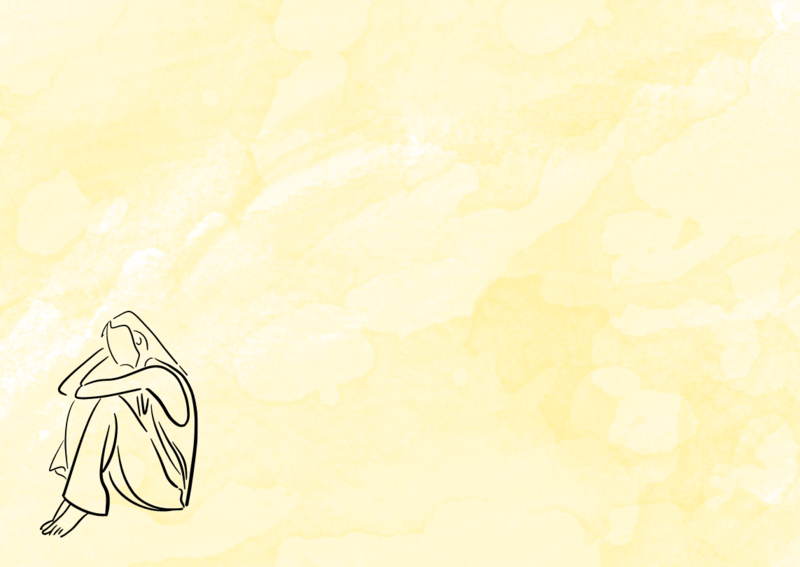The Warning Light
I remember my anxiety even in my earliest moments. Walking between classes in a single file line in elementary school, I would count the ceiling tiles, my heart racing. In the car, I would feel the need to blink every time a pole whizzed past the window. Every compulsion was borne out of the fear of what if. What if I don’t do it and a fire starts? What if something crawls into my closet tonight? What if someone I love is harmed? The thoughts only worsened as I grew up and realized just how much more there was to be scared of.
I can’t remember when I first learned about antisemitism; I think it was something ingrained in me, learned through family stories and history books. I know that once I reached middle school, it became unavoidable. One day in eighth grade, I walked into my English class and found myself surrounded by Holocaust imagery. There were dozens of photos scattered over the floor, arranged on the desks, and taped on the walls. Images of Jews beaten, murdered, starved, burnt, impossible for me to escape. I couldn’t then put into words the sheer dystopian horror of it all: me, panicking in the hallway, and the rest of my class having to be warned to not make Holocaust jokes after the lesson. It seemed like after that shock, I was constantly reminded of everything I should be scared of. It was the same year boys in my algebra class did a Nazi salute in front of me and faced no consequences, the same year I began to attempt to understand the cause of antisemitism. It was the year that the Tree of Life shooting shook my city to its core.
Eighth grade was also the year I began therapy. I was diagnosed with PTSD and OCD, and the constant anxieties of my early memories began to make sense. It wasn’t solely my diagnoses that put my anxiety in context, though. It seems now that there has been a constant warning light going off in my periphery regarding rising antisemitism in the US. American Jews have been given unceasing reminders that we are not welcome, whether it be antisemitic posters hung in our neighborhoods, Swastikas drawn on our kids’ desks, or violence in our temples. The places we have created to be home bases, safe from hate, have increasingly been violated, and at the same time American Jews are collectively being gaslit. We are told that we are exaggerating, that “minor” acts of antisemitism are just jokes and that we are imagining that things are getting worse, despite the statistics. American Jews, then, are left alone with that warning light flashing.
Jewish women especially have carried the burden of that warning light. You don’t have to shuffle through too many movies and TV shows before you get to one that features the stereotype of the neurotic Jewish mother. She is overbearing, controlling, and contagiously anxious. She nags her children incessantly and worries her way through the story. The archetypal, comedic Jewish mother is a hypochondriac and makes disasters where there are none. We created her as a way to externalize our fears. We take all of our anxieties and give them to a caricature, point to her for the non-Jewish audience, and laugh. We can say we are nothing like her, that we are rational, Americanized Jews. Unlike the Jewish mother, we accept that we are not taken seriously and don’t continue to make fools of ourselves by demanding too much.
The problem with distancing ourselves from anxiety is that it doesn’t go away when we do. In our desperation to blend in with America, we just make it harder to piece our anxiety apart and realize its causes. If we can’t even get to that kind of understanding, then we are miles away from actually directing that anxiety in a positive manner. The pressure to distance ourselves from anxiety is no coincidence, though—it’s part of a greater culture in our country. In America as a whole, we are made to face local and national trauma with little outlet for expressing our emotions in a healthy way. Gun violence is the most obvious instance of this. My freshman orientation in high school, for example, involved an instructional video on how to plug our classmates’ bullet wounds and how to tie a tourniquet. That kind of training was shown every year, to even younger students as well, with no space provided to talk about any of it, much less unpack why this is the reality we are forced to live in, leaving our paranoia to fester.
It’s moments like those lessons that create a culture of constant anxiety, especially for groups like Jews who face the additional threat of hate-based gun violence. Until the structures that create paranoia are dismantled, and until we as Jews have an honest look inward at how we interact with our own anxiety, the warning light will continue blinking on, flashing more and more frequently until it is an unflinching red light, blinding us from seeing our next step.
This piece was written as part of JWA’s Rising Voices Fellowship.







